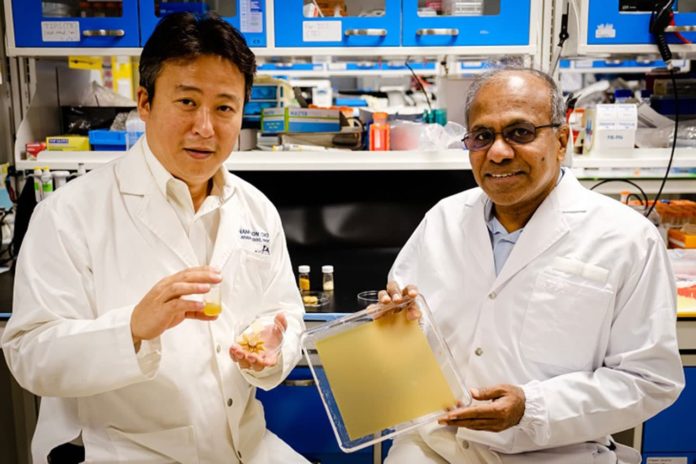Scientists at Singapore’s Nanyang Technological University (NTU Singapore) have transformed the ultra-tough pollen grains from sunflowers into a pliable, gel-like material through a process similar to conventional soap-making. By casting this gel-likee material into a mold and left to dry, scientists successfully created paper-like material.
This paper-like material can bend and curls with changing levels of environmental humidity. What’s more, its mechanical properties may make it useful for a wide range of applications such as soft robots, sensors, artificial muscles, and electric generators.
In the study, scientists demonstrated that material’s properties could be altered using a strip of pollen-based paper that can ‘walk.’
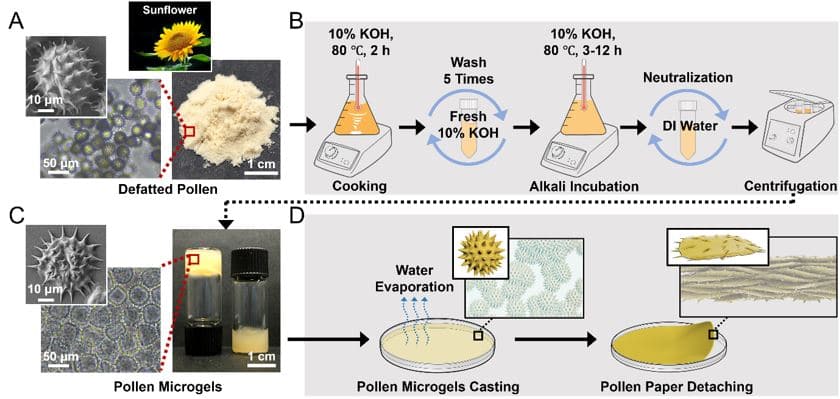
NTU Professor Cho Nam-Joon, who holds the Materials Research Society of Singapore Chair in Materials Science and Engineering, said: “These findings build on the recent work by our NTU team, in which we showed how hard pollen grains could be converted into soft microgel particles that alter their properties in response to external stimuli. This process also renders pollen and the products we create from it, non-allergenic.”
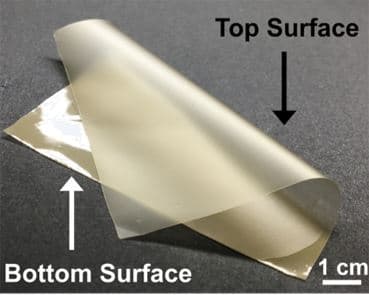
The top surface of the pollen paper, which appears frosted to the naked eye, showed remnants of the sunflower pollen grains’ distinct spikes, contributing to its roughness. The bottom surface, which takes on a mirror-like surface finish, was relatively smoother.
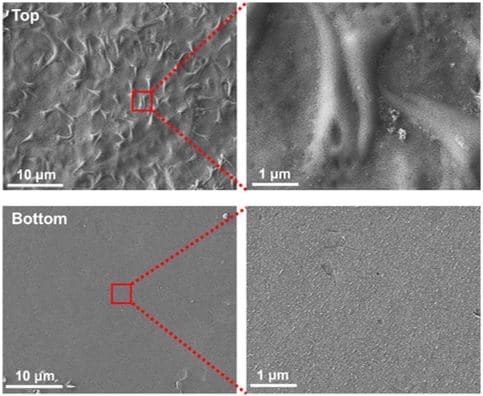
This structural difference in pollen particle layers means that in the presence of water vapor, the paper starts to bend, and under dry conditions, it unbends. Repeated cycles of humid and dry conditions cause the paper to perform a flipping motion over time.
NTU Assistant Professor Song Juha explained: “During water or water vapor absorption, the pollen particles in the paper swell and expand. Due to the structural difference in the pollen particle layers, the paper swells differently at different parts. This induces internal stresses through the thickness of the paper, which forces it to bend.”
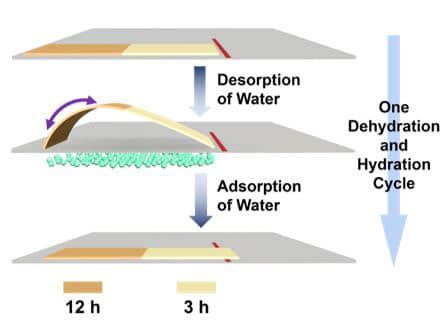
By adjusting processing parameters, mainly alkaline incubation time of the pollen grains, scientists were able to customize the water-vapor responsiveness of pollen paper.
They joined two pollen paper samples, each prepared under different incubation times (3 hours and 12 hours), to form a strip of bi-material pollen paper with a visible boundary. When the bi-material pollen paper was exposed to a humid-dry cycle, the two pollen paper samples’ different reactions to humidity caused the paper to ‘walk’ like a caterpillar that moves by alternatingly expanding and contracting its soft body.
NTU Distinguished University Professor Subra Suresh, who is also the NTU President, said, “The pollen paper we’ve developed shows strong mechanical actuation as the humidity changes. This naturally occurring material shows potential for developing a wide spectrum of actuation systems with customized properties for different functional needs.”
In addition to Profs Suresh, Cho, and Song, the list of authors include research fellows Ze Zhao, Youngkyu Hwang, and Tengfei Fan, and research associate Yun Yang, all from NTU.
Journal Reference:
- Actuation and locomotion driven by moisture in paper made with natural pollen. DOI: 10.1073/pnas.1922560117
